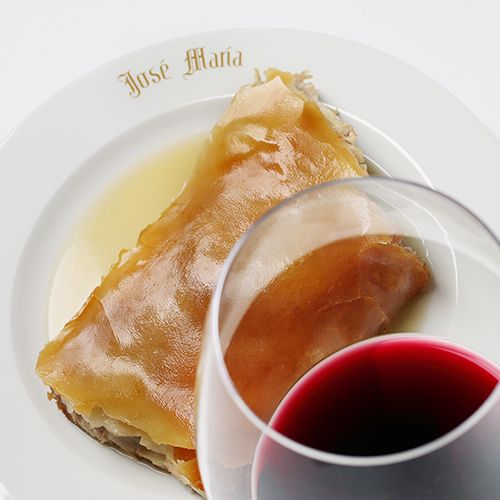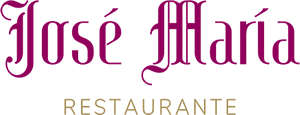ABOUT OUR SUCKLING PIG
Reinventing the Suckling Pig Tradition
Roasted suckling pig is considered by José María to be the standard-bearer for both his menu and for the cultural-gastronomic heritage of the Segovian people.
His unflagging concern for the quality of the product has led to ongoing research into how to improve the way it is raised and cared for so that each table can be served the most unique and authentic roasted suckling pig Segovia has to offer..

- SUCKLING PIG AND TRADITION
- FIRST STUDIES ON SUCKLING PIG
- NUTRITIONAL STUDY CARRIED OUT BY DR. J. MATAIX
Enough has been written and said about the suckling pig, that delightful delicacy of the table – to know that it is a popular dish in various parts of the world, but it is especially so in Segovia, where it is considered the icon of local cuisine.
The suckling pig has had an ongoing presence in the gastronomic and cultural history of Segovia, and is rooted in tradition.
If we observe the tastes, the recipes and the customs of its preparation across different countries and regions, we may arrive at the conclusion that our recipe here in Segovia is the most surprising one of all, due to its simplicity and the naturalness with which we treat the product when cooking it.
In China, Greece, Corsica … and many other places where suckling pig is a very popular dish, the recipes have a general tendency to tenderize, marinate and stuff the pig with a variety of herbs and spices …, while the popular Segovian recipe mainly relies on the outstanding product itself, with just the added condiments of salt and pepper.
As a result of this unique preparation, it is easy to assume that the gastronomic success of our suckling pig must depend primarily on the raw material, as it does not allow for condiments or elaborate sauces, which might mask the main product.
In his quest to achieve the best quality raw materials, José María created his own breeding farm to bring about, following the first scientific studies into cross-breeding and the appropriate feeding of pregnant mothers, an exceptional product.
Later, in 2002, this goal would lead him – along with other collaborators, to create PROCOSE (the Association for the promotion of the suckling pig of Segovia), which is in charge of the denomination “Marca de Garantía” for the roasted suckling pigs of Segovia, a brand officially awarded and registered by the Ministry of Agriculture; José María is the chairman of the association.
Generally speaking, the suppliers of suckling pigs for restaurants and grill houses in our province and neighbouring areas were cattle ranchers with few facilities, a small number of female pigs, were not 100% dedicated to the trade and had to feed the animals on their own crops, not to mention the fact that their living depended on their own harvests.
This situation meant that the suckling pig provided by this unique market was by no means consistent – it varied, without having any specific characteristics. As such the final product was irregular.
There was also a need to make improvements with regards lactation, in the interests of balancing the tenderness of the meat and fat. In addition we need to take into account the fact that these smallholdings had a marked tendency to disappear from one year to the next.
All these considerations led us to consider the need to resolutely undertake this project, in the knowledge that suckling pig is the most popular dish in our restaurant, and always with the intention of obtaining better quality raw materials.
Finally, using well-refined techniques and the indispensable help of our traditional oven, we obtain from this singular product a healthy and appetizing delicacy to delight and satisfy the most demanding palates of the critics, gourmets and social diners who fill our dining rooms every day, proud to make a contribution to the image that Segovia has as a gastronomic and tourist city par excellence.
To this end, we created breeding farms equipped with the most modern and highly sterilised facilities, which currently house around 500 female breeders, and which is the first experimentation project in Spain dedicated exclusively to piglets. Alive, these tend to range between 4.200 and 4.800kg in weight, which they reach in a maximum of 15 to 20 days of life.
Our main concerns have arisen around genetics, cross-breeding, and nutrition, not forgetting our rigid discipline regarding sterilisation and healthcare. With this study of breeds and cross-breeds, we are aiming to achieve a balance between the tenderness and the taste of the meat, in addition to a thin layer of skin, with an optimal fat level. To this end we have carried out cross-breeding which has enabled us to obtain some very positive results.
We have also come to the conclusion that the feeding of the selected females, both during gestation and lactation, is an extremely influential factor in the final results, especially during lactation.
This is easy to understand, given that in its short lifespan the suckling pig feeds exclusively on breast milk. In addition, we need to find a balance between weight and lifespan. In other words, we would not get the quality we aim for if a suckling pig needed more than 3 weeks to achieve its ideal weight. It is therefore crucial to achieve high quality breast milk, in addition to sufficient quantity.
Although it may seem simple, undertaking this lengthy process requires disciplined procedures and the joint contribution of continued technical advice from a veterinarian, thorough sanitary controls, as well as the untiring efforts of the farmer in pursuit of the goals set, taking notes of all the observations.
Finally, in the oven and then at the table, that is where the most important results ultimately come in, observing which preferences are the ones that most satisfy the diners.
José María Ruiz has always had the upmost interest in attaining a suckling pig that was both rich and at the same time well-balanced from a nutritional point of view.
After meeting Doctor Mataix, a professor of nutrition at Granada University at a nutrition and health conference, and after telling him about his search for the highest quality in this product, Mataix expressed great interest in helping him, in part because this was also new to him; up until that time only the nobler parts of the pig had been studied, such as hams, loins…
José María commissioned a quantitative analysis of one of our roasted piglets, which was carried out at the Institute of Nutrition and Food Technology at the University of Granada
After several weeks, we received an exhaustive study with the analytical results, and in addition the Doctor provided us with an informal summary of his interesting conclusions:
“Dear José Maria:
You sent a suckling pig to me at the Institute of Nutrition, and in a separate note I am notifying you of the scientific findings in terms of numbers and bars.
First and foremost it is my duty to congratulate you and to thank you for the untiring efforts that you put into the bodily health of your diners, and yet no less high are your demands for the care of their spirits, through the pleasure of the table and the tenderness of your roasted pig.
As for the quality of the fats, I must say, there are plenty of monounsaturated and polyunsaturated fatty acids, which are the ones that are recommended for a healthy diet. Obviously there is also so-called saturated fat, which although not advisable, is not present in excessive quantities. But also without it, your suckling pig would not have that crunchy textural richness or that rainbow of sensations that transpose one to that gastronomic paradise, where many foods are called upon and yet few are chosen, and among these latter, dear Jose Maria! is your suckling pig.
And without further ado, I send you a most well-deserved greeting and my admiration for the skills of your unparalleled cooking..” Dr. J. Mataix
Our thanks and our memories are with Dr. Mataix, who passed away in 2008.
We carried out our final study through multiple combinations of the factors mentioned above.
Once the animals are sacrificed, they are marked so we can monitor the individual results of each one. Observing their behaviour in the oven, and conducting a disciplined quality study, in which we take into account the cooking, the texture of the skin or crust, the juiciness of the loin, the amount of fat, and also undertake an organoleptic examination, to evaluate the flavours and aromas.
We thereby establish a score that determines a rating for each pig.
HOW TO ROAST A SUCKLING PIG
Recipe for roasted Segovian suckling pig
We tell you our secret so you can get the best roast suckling pig.
Nutrition and care
In ourfarmbreeder
From our oven to your table
‘Traveling Suckling Pig’ About to drop! so you can enjoy our famous roasts in your own home in 48 hours
